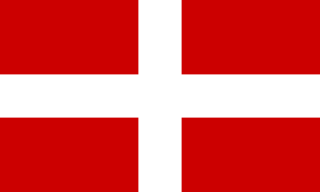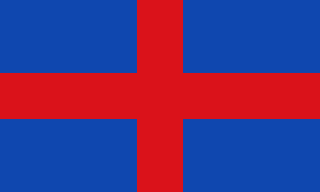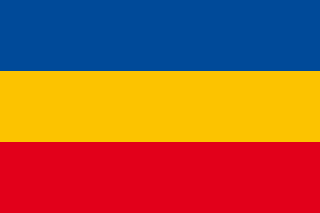Related Research Articles

Duke is a male title either of a monarch ruling over a duchy, or of a member of royalty, or nobility. As rulers, dukes are ranked below emperors, kings, grand princes, grand dukes, and sovereign princes. As royalty or nobility, they are ranked below princes and grand dukes. The title comes from French duc, itself from the Latin dux, 'leader', a term used in republican Rome to refer to a military commander without an official rank, and later coming to mean the leading military commander of a province. In most countries, the word duchess is the female equivalent.

The Chancellor of the Duchy of Lancaster is a ministerial office in the Government of the United Kingdom. Excluding the prime minister, the chancellor is the highest ranking minister in the Cabinet Office, immediately after the Prime Minister, and senior to the Minister for the Cabinet Office. The role includes as part of its duties the administration of the estates and rents of the Duchy of Lancaster.

The Kingdom of Prussia was a kingdom that constituted the German state of Prussia between 1701 and 1918. It was the driving force behind the unification of Germany in 1866 and was the leading state of the German Empire until its dissolution in 1918. Although it took its name from the region called Prussia, it was based in the Margraviate of Brandenburg. Its capital was Berlin.

The Duchy of Warsaw, also known as the Grand Duchy of Warsaw and Napoleonic Poland, was a French client state established by Napoleon Bonaparte in 1807, during the Napoleonic Wars. It initially comprised the ethnically Polish lands ceded to France by Prussia under the terms of the Treaties of Tilsit, and was augmented in 1809 with territory ceded by Austria in the Treaty of Schönbrunn. It was the first attempt to re-establish Poland as a sovereign state after the 18th-century partitions and covered the central and southeastern parts of present-day Poland.

The Grand Duchy of Lithuania was a European state that existed from the 13th century to the late 18th century, when the territory was partitioned in 1795 among the Russian Empire, the Kingdom of Prussia, and the Habsburg Empire of Austria. The state was founded by Lithuanians, who were at the time a polytheistic nation born from several united Baltic tribes from Aukštaitija.

The Crown of the Kingdom of Poland was a political and legal idea formed in the 14th century, assuming unity, indivisibility and continuity of the state. According to this concept, the state ceased to be the patrimonial property of the monarch or dynasty, but became a common good of the political community of the kingdom. Such an idea allowed the state to function even in periods of interregnum and led to the formation of a system characteristic of Poland based on the parliamentarism of the nobility and the free election of the ruler. At the same time, the idea of the crown went beyond existing political boundaries; lands lost in the past were considered to belong to it.

The Duchy of Burgundy emerged in the 9th century as one of the successors of the ancient Kingdom of the Burgundians, which after its conquest in 532 had formed a constituent part of the Frankish Empire. Upon the 9th-century partitions, the French remnants of the Burgundian kingdom were reduced to a ducal rank by King Robert II of France in 1004. Robert II's son and heir, King Henry I of France, inherited the duchy but ceded it to his younger brother Robert in 1032. Other portions had passed to the Imperial Kingdom of Burgundy-Arles, including the County of Burgundy (Franche-Comté).

The Duchy of Cornwall is one of two royal duchies in England, the other being the Duchy of Lancaster. The eldest son of the reigning British monarch obtains possession of the duchy and the title of Duke of Cornwall at birth or when his parent succeeds to the throne, but may not sell assets for personal benefit and has limited rights and income while a minor.

The County of Bar, later Duchy of Bar, was a principality of the Holy Roman Empire encompassing the pays de Barrois and centred on the city of Bar-le-Duc. It was held by the House of Montbéliard from the 11th century. Part of the county, the so-called Barrois mouvant, became a fief of the Kingdom of France in 1301 and was elevated to a duchy in 1354. The Barrois non-mouvant remained a part of the Empire. From 1480, it was united to the imperial Duchy of Lorraine.

The Duchy of Courland and Semigallia was a duchy in the Baltic region, then known as Livonia, that existed from 1561 to 1569 as a nominally vassal state of the Grand Duchy of Lithuania and subsequently made part of the Crown of the Polish Kingdom from 1569 to 1726 and incorporated into the Polish–Lithuanian Commonwealth in 1726. On March 28, 1795, it was annexed by the Russian Empire in the Third Partition of Poland.

The Duchy of Milan was a state in Northern Italy, created in 1395 by Gian Galeazzo Visconti, then the lord of Milan, and a member of the important Visconti family, which had been ruling the city since 1277.

The Duchy of Parmaand Piacenza, was an Italian state created in 1545 and located in northern Italy, in the current region of Emilia-Romagna.

The Grand Duchy of Tuscany was an Italian monarchy that existed, with interruptions, from 1569 to 1860, replacing the Republic of Florence. The grand duchy's capital was Florence. In the 19th century the population of the Grand Duchy was about 1,815,000 inhabitants.

The Duchy of Savoy was a territorial entity of the Savoyard state that existed from 1416 until 1860 and was a possession of the House of Savoy.

The Duchy of Benevento was the southernmost Lombard duchy in the Italian Peninsula that was centred on Benevento, a city in Southern Italy. Lombard dukes ruled Benevento from 571 to 1077, when it was conquered by the Normans for four years before it was given to the Pope. Being cut off from the rest of the Lombard possessions by the papal Duchy of Rome, Benevento was practically independent from the start. Only during the reigns of Grimoald and the kings from Liutprand on was the duchy closely tied to the Kingdom of the Lombards. After the fall of the kingdom in 774, the duchy became the sole Lombard territory which continued to exist as a rump state, maintaining its de facto independence for nearly 300 years, although it was divided after 849. Benevento dwindled in size in the early 11th century, and was completely captured by the Norman Robert Guiscard in 1053.

The Duchy of Bavaria was a frontier region in the southeastern part of the Merovingian kingdom from the sixth through the eighth century. It was settled by Bavarian tribes and ruled by dukes (duces) under Frankish overlordship. A new duchy was created from this area during the decline of the Carolingian Empire in the late ninth century. It became one of the stem duchies of the East Frankish realm which evolved as the Kingdom of Germany and the Holy Roman Empire.

The Kingdom of Germany or German Kingdom was the mostly Germanic-speaking East Frankish kingdom, which was formed by the Treaty of Verdun in 843, especially after the kingship passed from Frankish kings to the Saxon Ottonian dynasty in 919. The king was elected, initially by the rulers of the stem duchies, who generally chose one of their own. After 962, when Otto I was crowned emperor, East Francia formed the bulk of the Holy Roman Empire, which also included the Kingdom of Italy and, after 1032, the Kingdom of Burgundy.

The Grand Duchy of Oldenburg was a grand duchy within the German Confederation, North German Confederation and German Empire that consisted of three widely separated territories: Oldenburg, Eutin and Birkenfeld. It ranked tenth among the German states and had one vote in the Bundesrat and three members in the Reichstag.

The Grand Duchy of Mecklenburg-Schwerin was a territory in Northern Germany held by the House of Mecklenburg residing at Schwerin. It was a sovereign member state of the German Confederation and became a federated state of the North German Confederation and finally of the German Empire in 1871.

The County of Apulia and Calabria, later the Duchy of Apulia and Calabria, was a Norman state founded by William of Hauteville in 1042 in the territories of Gargano, Capitanata, Apulia, Vulture, and most of Campania. It became a duchy when Robert Guiscard was raised to the rank of duke by Pope Nicholas II in 1059.
References
- ↑ Richard Hodges, Light in the Dark Ages: The Rise and Fall of San Vincenzo Al Volturno (Cornell University Press, 1997), p. 27.